15% off £25 OR 20% off £35
Jams & Chutneys
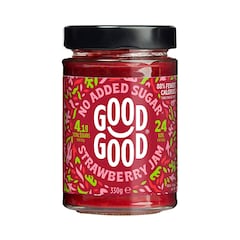


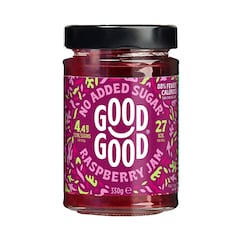
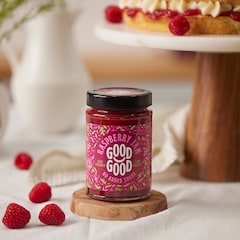
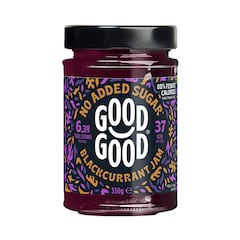
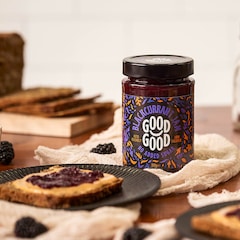

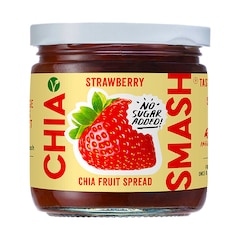

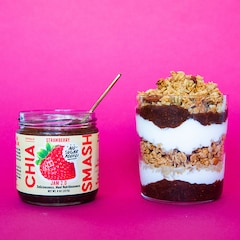


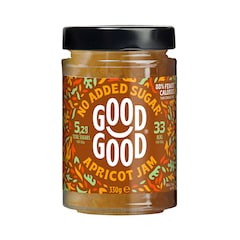
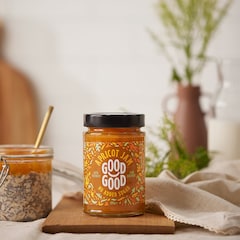
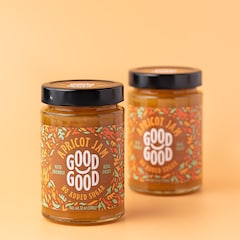
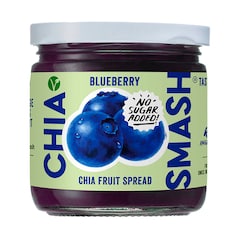
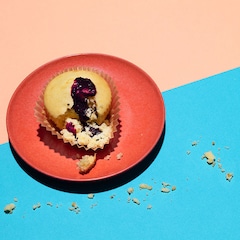
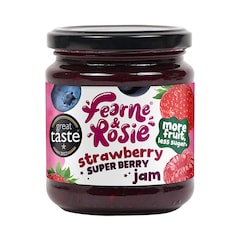
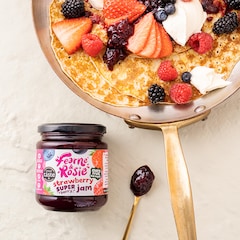



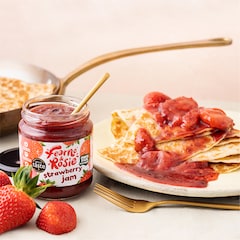
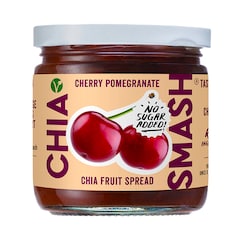
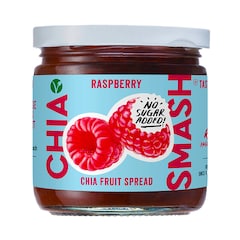
How is jam made?
We all love a little jam sometimes, whether it is splooshed on yogurt, stirred into cereal or spread on toast.
Jam is made from chopped up (or sometimes crushed) fruit, cooked with sugar, until the fruit reduces into that consistency we know and love.
We have been eating jam for a long time, as it is a traditional method of storing summer fruits for consumption during the cold winter months.
In fact, the very first recipe for jam appears in the world’s first known cookbook, from the 1st century AD.
Today there are many types of jam available. And low sugar jams are great for those trying to keep their sugar intake under control.
For example, The Skinny Food Co Not Guilty Low Sugar Raspberry Jam and the Skinny Food Co Not Guilty Low Sugar Blackcurrant Jam are tasty alternatives to ordinary full sugar jams.
The difference between jam, jelly and marmalade
A note on jams, jellies and marmalades. Jam’s consistency is soft enough to scoop up with a spoon, and often has pieces of whole fruit in it.
Jelly on the other hand is more rigid, while also being smoother, and without pieces of fruit.
Marmalade is jelly’s fine English cousin. Marmalade has all the sweetness of a jam, but also includes citrus peel.
UK marmalade is usually made from Spanish Seville oranges – one example is Meridian’s Organic Seville Orange Fruit Spread – but marmalade but can also be made from grapefruit or lemons. Bitter but delicious!
What is in jam?
Jam is made of equal parts sugar and fruit. Some recipes for making jam at home suggest using jam sugar, which contains added pectin, but if you are using fruit at the perfect ripeness then you shouldn’t need to add additional pectin.
Pectin is a naturally jelling substance which mostly occurs in the pips, cores and skin of fruit. If you’re making your own jam, choose slightly under ripe fruit, as under ripe fruit contains the most pectose. Pectose is contained in the cell walls of under ripe fruit.
Is jam good for you?
Traditionally jam is very sugary, so to stay healthy, jam should be eaten in small amounts and not too frequently. However, for those of us with a sweet tooth, there are lighter alternatives. Thursday Cottage Reduced Sugar Raspberry Seedless Jam and Thursday Cottage Reduced Sugar Blackcurrant Jam are two products which you can enjoy without the guilt of a sugar overload! Jams even make a great gift: check out the Thursday Cottage Traditional Gift Tin
Some people who are looking to eat as naturally as possible prefer to use organic ingredients where they can. Biona Organic Apricot Spread, Biona Organic Blackcurrant Spread and Biona Organic Forest Berries Spread are all jams that have been certified as organic by professional bodies.
What is chutney?
The broad meaning of chutney is anything that is preserved in sugar and vinegar, irrespective of what it is that’s being preserved (or the consistency of the resulting chutney.)
Chutney is usually gluten free, with a spicy or savoury flavour, as opposed to the sweetness of jams and jellies. Chutney is a key part of Indian cuisine, adding flavour or balance to a variety of dishes.
What is chutney used for?
Chutney can be used in a number of ways. It adds depth of flavour to meaty sandwiches and can be served on the side of any meat or fowl dish.
Pureed, smoother chutneys can be served as dipping sauces for spring rolls, samosas, or any fried finger food.
Chutney also tastes great with cheese. Try out combinations of different cheeses and chutneys with a high bake water biscuit or cream cracker.
Chutneys go well with curries of course! Peanut chutney, green chutney and tamarind chutney are just a few of the more unusual chutneys which you may come across, particularly if you are eating Indian cuisine. A chutney which is particularly popular in the West is mango chutney, the very sweet accompaniment stored in the fridge for that Friday night takeaway.
A spicy pepper based chutney to try is Granny’s Secret Avjar Hot. Each jar contains a whopping eleven peppers, without any added sugar or preservatives. It’s great spread on toast as a vegetarian snack, and can be added to risotto or pasta sauce to give a fiery kick.
How is jam made?
We all love a little jam sometimes, whether it is splooshed on yogurt, stirred into cereal or spread on toast.
Jam is made from chopped up (or sometimes crushed) fruit, cooked with sugar, until the fruit reduces into that consistency we know and love.
We have been eating jam for a long time, as it is a traditional method of storing summer fruits for consumption during the cold winter months.
In fact, the very first recipe for jam appears in the world’s first known cookbook, from the 1st century AD.
Today there are many types of jam available. And low sugar jams are great for those trying to keep their sugar intake under control.
For example, The Skinny Food Co Not Guilty Low Sugar Raspberry Jam and the Skinny Food Co Not Guilty Low Sugar Blackcurrant Jam are tasty alternatives to ordinary full sugar jams.
The difference between jam, jelly and marmalade
A note on jams, jellies and marmalades. Jam’s consistency is soft enough to scoop up with a spoon, and often has pieces of whole fruit in it.
Jelly on the other hand is more rigid, while also being smoother, and without pieces of fruit.
Marmalade is jelly’s fine English cousin. Marmalade has all the sweetness of a jam, but also includes citrus peel.
UK marmalade is usually made from Spanish Seville oranges – one example is Meridian’s Organic Seville Orange Fruit Spread – but marmalade but can also be made from grapefruit or lemons. Bitter but delicious!
What is in jam?
Jam is made of equal parts sugar and fruit. Some recipes for making jam at home suggest using jam sugar, which contains added pectin, but if you are using fruit at the perfect ripeness then you shouldn’t need to add additional pectin.
Pectin is a naturally jelling substance which mostly occurs in the pips, cores and skin of fruit. If you’re making your own jam, choose slightly under ripe fruit, as under ripe fruit contains the most pectose. Pectose is contained in the cell walls of under ripe fruit.
Is jam good for you?
Traditionally jam is very sugary, so to stay healthy, jam should be eaten in small amounts and not too frequently. However, for those of us with a sweet tooth, there are lighter alternatives. Thursday Cottage Reduced Sugar Raspberry Seedless Jam and Thursday Cottage Reduced Sugar Blackcurrant Jam are two products which you can enjoy without the guilt of a sugar overload! Jams even make a great gift: check out the Thursday Cottage Traditional Gift Tin
Some people who are looking to eat as naturally as possible prefer to use organic ingredients where they can. Biona Organic Apricot Spread, Biona Organic Blackcurrant Spread and Biona Organic Forest Berries Spread are all jams that have been certified as organic by professional bodies.
What is chutney?
The broad meaning of chutney is anything that is preserved in sugar and vinegar, irrespective of what it is that’s being preserved (or the consistency of the resulting chutney.)
Chutney is usually gluten free, with a spicy or savoury flavour, as opposed to the sweetness of jams and jellies. Chutney is a key part of Indian cuisine, adding flavour or balance to a variety of dishes.
What is chutney used for?
Chutney can be used in a number of ways. It adds depth of flavour to meaty sandwiches and can be served on the side of any meat or fowl dish.
Pureed, smoother chutneys can be served as dipping sauces for spring rolls, samosas, or any fried finger food.
Chutney also tastes great with cheese. Try out combinations of different cheeses and chutneys with a high bake water biscuit or cream cracker.
Chutneys go well with curries of course! Peanut chutney, green chutney and tamarind chutney are just a few of the more unusual chutneys which you may come across, particularly if you are eating Indian cuisine. A chutney which is particularly popular in the West is mango chutney, the very sweet accompaniment stored in the fridge for that Friday night takeaway.
A spicy pepper based chutney to try is Granny’s Secret Avjar Hot. Each jar contains a whopping eleven peppers, without any added sugar or preservatives. It’s great spread on toast as a vegetarian snack, and can be added to risotto or pasta sauce to give a fiery kick.

